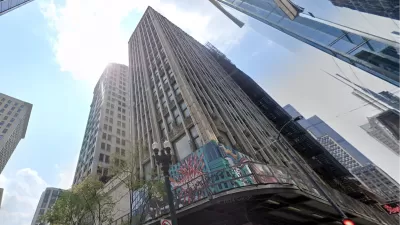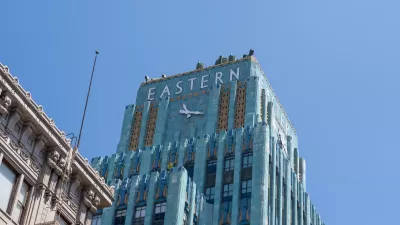Low interest rates and incentives from the state are helping Buffalo, NY to leverage its waterfront and extraordinary architecture to create a vibrant downtown, with historic preservation and adaptive reuse projects at center stage.
Through adaptive reuse of several notable properties, such as the Buffalo State Asylum for the Insane, a project by H.H. Richardson and Frederick Law Olmsted, the city is capitalizing on its important historic assets, reports Jenna McKnight.
“Our plan is to address the impediments that have held back growth: To turn older buildings into adaptive reuse projects, to focus on creating funding sources to stabilize distressed neighborhoods, to have a more vibrant waterfront,” explained Brendan Mehaffy, executive director of the city’s Office of Strategic Planning. “We’d definitely like to see a population increase,” he added, “but we are focused on making a Buffalo that Buffalonians can really enjoy.”
"A key initiative is reinvigorating the waterfront. 'Buffalo has always been criticized, and rightfully so, for not taking advantage of its waterfront,' said architect Paul McDonnell, president of the Campaign for Greater Buffalo. That’s starting to change. During a recent open-air bus tour showcasing the city’s architecture, McDonnell pointed to HarborCenter, a $172 million entertainment complex under construction on a 1.7-acre block adjacent to the First Niagara Center, home to the NHL’s Sabres. Designed by Populous and financed by team owner Terry Pegula, the structure will feature two hockey rinks, a hotel, and space for restaurants, retail, and parking. Full completion is slated for 2015."
FULL STORY: The Buffalo Boom

Trump Administration Could Effectively End Housing Voucher Program
Federal officials are eyeing major cuts to the Section 8 program that helps millions of low-income households pay rent.

Planetizen Federal Action Tracker
A weekly monitor of how Trump’s orders and actions are impacting planners and planning in America.

Ken Jennings Launches Transit Web Series
The Jeopardy champ wants you to ride public transit.

California Invests Additional $5M in Electric School Buses
The state wants to electrify all of its school bus fleets by 2035.

Austin Launches $2M Homelessness Prevention Fund
A new grant program from the city’s Homeless Strategy Office will fund rental assistance and supportive services.

Alabama School Forestry Initiative Brings Trees to Schoolyards
Trees can improve physical and mental health for students and commnity members.
Urban Design for Planners 1: Software Tools
This six-course series explores essential urban design concepts using open source software and equips planners with the tools they need to participate fully in the urban design process.
Planning for Universal Design
Learn the tools for implementing Universal Design in planning regulations.
Ada County Highway District
Clanton & Associates, Inc.
Jessamine County Fiscal Court
Institute for Housing and Urban Development Studies (IHS)
City of Grandview
Harvard GSD Executive Education
Toledo-Lucas County Plan Commissions
Salt Lake City
NYU Wagner Graduate School of Public Service





























